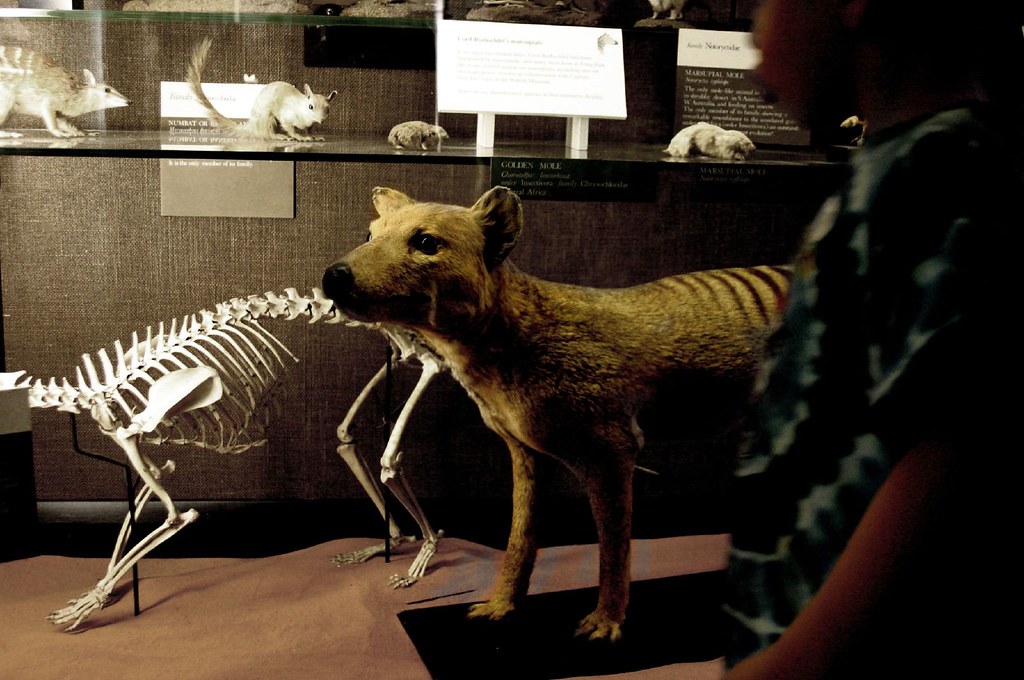Extinction of a Unique Australian Icon
The Tasmanian tiger, also known as the thylacine, is an iconic symbol of Australia’s unique wildlife. With its distinctive striped coat and carnivorous habits, this marsupial predator once roamed the forests and grasslands of Tasmania, an island state off the southern coast of mainland Australia. However, relentless hunting, habitat destruction, and disease ultimately led to its tragic demise, making it one of the most poignant examples of human-induced extinction in recent history.
The Tasmanian tiger was a remarkable creature, resembling a large, dog-like carnivore with distinctive stripes across its back. Despite its name, it was not actually a tiger but a marsupial, belonging to the family Thylacinidae. Unlike most marsupials, which carry their young in a pouch, female thylacines had a pouch that opened rearward, similar to a kangaroo, and gave birth to relatively undeveloped young, which they then carried in the pouch until they were more mature.
The arrival of European settlers in Tasmania in the 19th century spelled trouble for the thylacine. Considered a threat to livestock, the Tasmanian government implemented bounties and eradication campaigns to eliminate thylacines from agricultural areas. Additionally, habitat loss due to land clearing for farming and logging further reduced the thylacine’s range.
By the early 20th century, the Tasmanian tiger’s population had dwindled to a fraction of its former size. The last known wild thylacine was killed in 1930, and the species was declared extinct in the wild in 1936. The last captive thylacine, named Benjamin, died at the Beaumaris Zoo in Hobart, Tasmania, on September 7, 1936, marking the tragic end of a species.
Despite the extinction of the Tasmanian tiger, sightings of alleged thylacines in the wild continue to fuel speculation and hope for the species’ survival. However, extensive searches and expeditions have failed to produce conclusive evidence of their existence. Nevertheless, the thylacine remains an enduring symbol of conservation and biodiversity in Australia, serving as a reminder of the importance of protecting endangered species and their habitats.
Efforts to preserve the memory of the Tasmanian tiger and raise awareness about its plight continue to this day. Museums, zoos, and wildlife organizations showcase exhibits and educational programs highlighting the thylacine’s unique biology and the factors that led to its extinction. Additionally, scientific research and genetic studies offer insights into the thylacine’s evolutionary history and its place in Australia’s natural heritage.
The extinction of the Tasmanian tiger is a sobering reminder of the impact that human activities can have on fragile ecosystems and the species that inhabit them. As we reflect on the tragic loss of this iconic Australian predator, it serves as a call to action to redouble our efforts to protect and conserve the world’s biodiversity for future generations. Though the thylacine may be gone, its memory lives on, inspiring us to strive for a more sustainable and harmonious relationship with the natural world.

